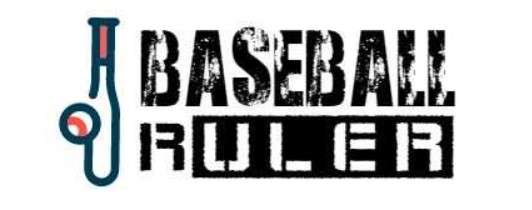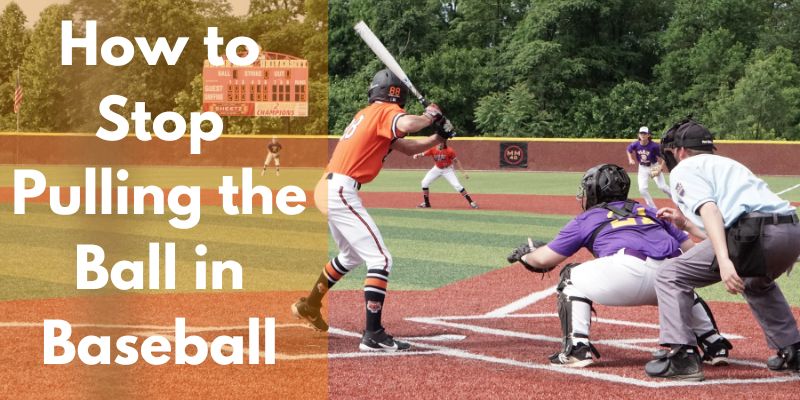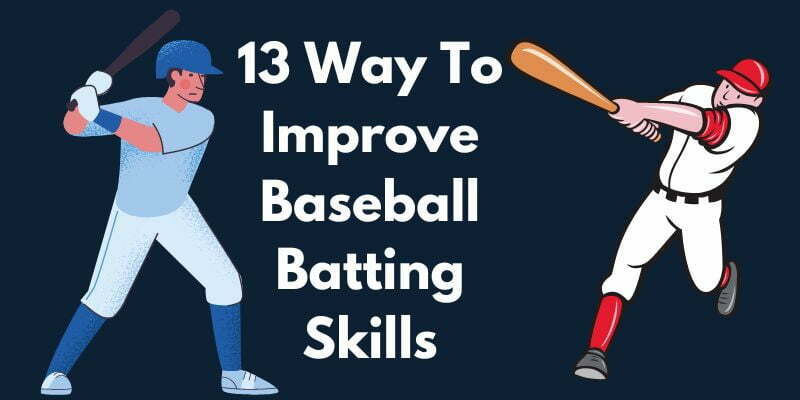A baseball swing involves various mechanical aspects that impact how the ball is hit. And with the ball advancing 90 miles per hour, hitters can make a number of different mistakes while swinging.
It can take the players and their coaches days, months, or even years to master a swing. Identifying and fixing these potential mistakes in your swing becomes the key to becoming a great hitter.
A hitch is one of the most common obstacles that is observed among hitters. It’s the movement that hitters make before the actual swing that can often put a wrench in their game.
This article breaks down how a hitch can impact your baseball swing and how to fix it.
What Is A Swing?
When a hitter attempts to connect the ball to the pitch, it’s called a “swing.”
Although there is no exact definition of what constitutes a swing, generally, a swing can be when the bat crosses the front of the batter’s body, when the bat clears home plate, or when the batter’s wrist rolls.
A swing can be classified as a “checked swing” and “half swing,” and it is typically up to the umpire(s) to decide whether the batter attempted a swing.
Since there are several technical aspects involved in a swing, it can be really difficult to master.
Some Of The Most Common Hitting Mistakes
While developing their swing, hitters can also develop different habits that can cause them to make mistakes and affect their batting score.
Some of the most common hitting mistakes in baseball are:
- Overswinging
- Incorrect Hip Movement
- Swinging Up
- Head Position
- Poor Hand Position At Contact
- Incorrect Grip
- Hitting Load
- Poor balance or rhythm
One other most common mistake that many young players make is a hitch.
What Is A Hitch?
Often considered a mistake in loading, a hitch occurs when the batter does not swing in a single motion.
A hitch is thus essentially the movement of the hitter’s upper body when their hands move from the starting position before swinging. It’s a hesitation before they hit. The hand ends up in a different starting position from where they would have otherwise ended up.
Because of the hitch, the batter will often not be able to hit the ball at the correct time causing the ball to have a slow bat.
This sluggish reaction results in loss of power and makes it difficult to bat high-velocity fastballs.
How To Fix A Hitch In A Baseball Swing?
To avoid a hitch, the hitter’s hands should ideally be at his shoulder at a 45-degree angle with his elbows.
If you are having trouble in your swing due to a hitch, you can make the following changes to fix it.
1. Check Your Hitting Position
The hitch in your swing may be due to various factors like improper stance, poor balance, or uneven weight distribution.
When you’re aiming to swing, you should be standing with your feet shoulder-width apart and your wrists, elbows, and hands should be in a straight line. You should also be positioned closer to the plate.
You also want to ensure your back is straight so that your weight is evenly distributed on both feet. Only with proper alignment and good mechanics can you achieve a batting stance required to hit high-velocity fastballs.
A well-balanced hitting position will not only help you hit the ball harder but also help you hit it further across the field.
Here are some key areas you should look into and correct:
- Keep your back leg stable with the foot firmly planted to the ground throughout the swing.
- Your front hand should not drift too far towards the first base.
- To put more power into your swing, keep your back elbow close to the body.
- Do not overswing and keep the focus on hitting a solid pitch.
2. Be Consistent With Practice And Use A Practice Bat
The perfect swing will not be achieved overnight. You need consistent practice along with accurate mechanics to be successful with your swing. With practice, you can build the desired power that will help you hit a home run.
Practice swinging at different speeds and try to rectify your hitch using a pitching machine or a tee. This will also help increase your batting average.
You can even look into using a practice bat if you find hitting the ball mid-air difficult. Use your whole hand with the fingers positioned correctly on the bat and your back foot planted firmly during the entire swing.
Practice with moving targets to improve your eye-hand coordination. With a practice bat and regular practice, your batting skills can improve significantly.
3. Recommended Drills
- Isometric Swing Training
- Sequence Drill
- Weighted Bat Swing Drill
- Front Soft Toss Drill
- Hard Toss Drill
A Hitch Is Not Necessarily A Bad Thing
Most people tend to regard a “hitch” in a swing as a bad thing that needs to be fixed. However, many experienced players have added a hitch in their swing and have seen impressive results.
You can classify a hitch into two types — the first is achieved by manipulating the position of the end of the bat, while the second involves a move in the position of the hitter’s arm.
Sometimes, a hitter could use both the movements in his hitch.
Some hitters also hitch by titling the bat tip towards the pitcher away from their body.
FAQs
What are the elements of a good baseball swing?
A good swing comes from proper posture and balance. The position of your head, shoulders, arms, and legs along with a good grip on the bat will help you achieve a good baseball swing.
What is the best swing in baseball?
Ken Griffery Jr. is one of the greatest players and is known to have one of the sweetest swings in baseball history.
How long is a baseball swing?
A baseball swing takes seconds for completion, typically 150 milliseconds.
Conclusion
There are many mistakes a player may make when swinging due to which he may not be able to achieve the desired result and may even affect his batting score.
A hitch is one of these mistakes that can negatively affect the swing and result in a slow bat. We hope this article helps you take a step towards rectifying your hitch and achieving a smooth swing.




